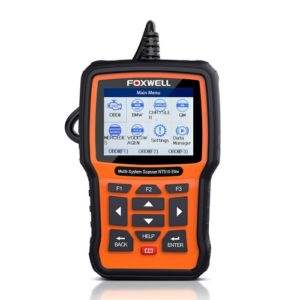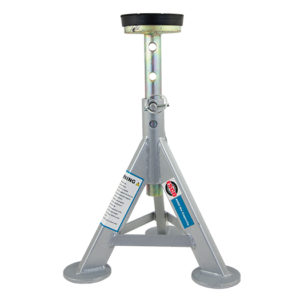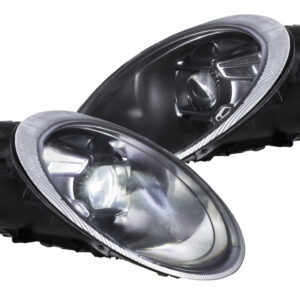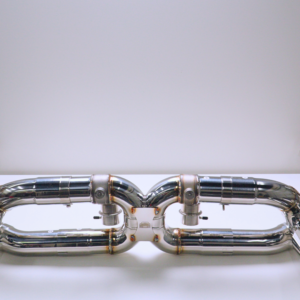Brake fluid is a critical component to your vehicle’s braking system. When you press the brake pedal, the brake fluid transfers the pressure to your brake calipers and presses the brake pads against the rotors. Over time, the brake fluid can absorb air and moisture, which will allow the brake fluid to compress under pressure. This results in spongy and even ineffective braking.
Overall, this is an easy procedure that someone with some experience working on cars can do. To perform this DIY, check out the helpful tutorial above from YouTuber, CarFanatic. While the video is on a Porsche 911 (997), the procedure also applies to the 996, 986, and 987. Detailed steps can be found below.
- Motive Power Brake Bleeder, For European Vehicles
- Motive Brake Fluid Catch Bottle Kit
- K Tool International Low Profile Jack (3.33 Ton)
- ESCO 10499 Low Profile Flat Top Jack Stands (Pair) (1 required)
- Wheel Chocks
- 1/2-Inch Drive 19MM Non-Marring Lug Nut Socket
- 1/2 Inch Drive Click Torque Wrench (25-250 ft.-lb.)
- Wheel Bolt Guide For Porsche, Audi, and VW (2 recommended)
- 11mm Combination Wrench (for brake bleeder valve)
- Safety Glasses
- Disposable Gloves
Wheel bolts: 96 ft-lbs
Brake bleeder valves: 6 ft-lbs (just hand tighten until snug)
Brake fluid capacity: 0.45 liters
Step 1: Prepare your vehicle and work area.
- Park your car on a flat surface.
- Gather tools and parts.
- Put on eye protection and gloves.
Step 2: Setup the power brake pressure bleeder.
- Fill it with 0.9 liter of brake fluid; save the 0.1 liter of fluid to top off your reservoir at the end.
- Then pressurize it to 15 psi.
- Note: Brake fluid is extremely corrosive, so do not let brake fluid touch anything on your car that is painted.
Step 3: Connect the power brake bleeder to your brake fluid reservoir.
- Pop your vehicle’s front storage compartment (aka “frunk”).
- Remove a plastic panel on the driver side to access the brake fluid reservoir.
- Unscrew brake fluid reservoir cap and remove mesh filter; you DO NOT need to extra brake fluid from the reservoir.
- Screw on the power brake bleeder adapter onto the brake fluid reservoir.
- Connect the power brake bleeder to the adapter using the supplied hose and fitting
Step 4: Prepare to bleed each brake caliper in the following order.
- Start with the rear passenger side and drain: 0.3 liter (split 50/50 for outer & inner bleeder valve)
- Move to the rear driver side and drain: 0.25 liter (split 50/50 for outer & inner bleeder valve)
- Move to the front passenger side and drain: 0.15 liter (split 50/50 for outer & inner bleeder valve)
- Finish off with the front driver side and drain: 0.1 liter (split 50/50 for outer & inner bleeder valve)
- Note: While the brake fluid capacity is ~0.45 liters, we recommend more to ensure all the old fluid has been flushed.
Step 5: Remove the wheel of the corner you will be working on.
- You will need to remove your wheels to access the brake calipers.
- We recommend you work on one corner at a time.
- We recommend you work on one corner at a time. Check out the video from Car Fanatic to see how it’s done.
- Before you lift your car, be sure to chock off the wheels on the opposite side to prevent your car from rolling. NEVER rely on a jack to support your vehicle!
- To get a rear corner on a jack stand, place the jack on the front jack point (under the car and behind the front wheel) on that side of the vehicle and raise that side until you can slide a jack stand underneath the rear jack point. Then lower your car, so the jack point sits on the jack stand.
- To get a front corner on a jack stand, repeat the prior steps but jack that side of the vehicle up by the rear jack point.
- Use a 19mm lug nut socket and breaker bar to remove your wheels.
- To prevent damaging and re-installing each wheel, we recommend you use two wheel alignment pins for each wheel.
Step 6: Bleed the brake caliper.
- Drain the outer and inner brake caliper bleeder valves by connecting the catch can and loosening the bleeder valves with an 11mm wrench.
- Monitor how much brake fluid you are collecting, so you don’t drain too much.
- Once you’ve drained enough fluid from each bleeder valve, tighten it to stop the flow of brake fluid; DO NOT OVER-TIGHTEN the bleeder valves or you can easily brake them. Just make sure they’re snug.
Step 7: Re-install your wheel and lower the vehicle.
- Re-install your wheel using wheel guide bolts to help you realign it.
- Torque the wheel bolts in a star pattern to 118 ft-lbs.
- Remove the jack stands.
- Remove the wheel chocks.
Step 8: Step 9: Repeat the steps 5-7 for the remaining corners.
Step 9: Top off your brake fluid reservoir.
- Depressurize the power brake bleeder and disconnect it from the brake fluid reservoir.
- Remove power brake bleeder adapter from the brake fluid reservoir.
- Top off the brake fluid reservoir with the remaining fresh brake fluid to get the level just under the “max” line.
- Re-install the brake fluid reservoir filter, cap, and plastic cover.
Step 10: Clean up your work area.
- Empty your old brake fluid into the now empty brake fluid container.
- DO NOT dispose of your old brake fluid by pouring it out or putting it in the trash; brake fluid is extremely corrosive and bad for the environment, so be sure to take the old fluid to your local auto parts store for recycling.
- Put all of your tools and supplies back where they belong.
- You’re all done!







George Lewis says:
Absolutely love the content and organization of your site and youtube vids.
One point on the above torque spec section; my 2010 TT owner’s manual says the wheel bolt torque is 96 ft-lbs…just something that caught my eye on this page and hope it helps.
ecarguidesllc says:
Thanks. Fixed!
Christos Machairas says:
Good morning
Can anyone tell which is the internal diameter of the brake reservoir??
42 mm or else
Cause here in Europe the most common brake bleeders’ diameter is 42
Kind regards
Christos Machairas
Athens, Greece
Porsche Cayman 987.1 MY 2008